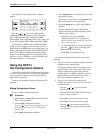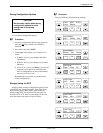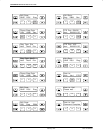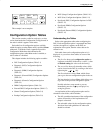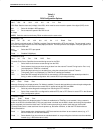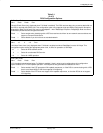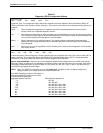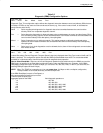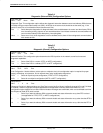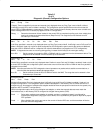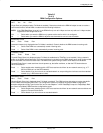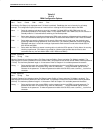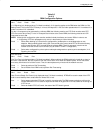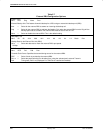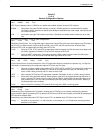
COMSPHERE 3550 Series Data Service Units
5-10 February 1995 3550-A2-GB20-10
Table 5-4
Diagnostic (External DBU) Configuration Options
Diag Type: Disr
Next Disr None Prev
Diagnostic Type
. This configuration option defines the diagnostic interaction between control and tributary DSUs that are
in backup using an
external
dial backup unit (DBU). All DSUs on the same circuit should be set the same (e.g., if the
control is set to Disr, all its tributaries should also be set to Disr).
Disr — Select disruptive diagnostics for diagnostic data to be carried between the control and the tributary DSUs
over the same (primary) channel as user-transmitted data. User-initiated commands are sent between the
control and the tributary DSUs disruptively, interrupting data.
None — Select none if only local diagnostics are to be allowed; that is, there will be no diagnostic communications
with remote devices.
Table 5-5
(1 of 2)
Diagnostic (General) Configuration Options
Position: Cntrl
or
Trib
Next Cntrl Trib Prev
Network Position
. This configuration option determines the DSU’s position in the network, as well as its test and
diagnostic capabilities.
Cntrl — Select if the DSU is a control (PTPC or MPTC configuration).
Trib — Select if the DSU is a tributary (PTPT or MPTT configuration).
LinkConfig: Pt-Pt
or
M-Pt
Next Pt-Pt M-Pt Prev
Link Configuration
. Used to define a point-to-point or multipoint circuit, this configuration option is required for proper
testing, dial backup, unit operation, and is required when using nondisruptive diagnostics.
Pt-Pt — Select for a point-to-point configuration (PTPC or PTPT configuration).
M-Pt — Select for a multipoint configuration (MPTC or MPTT configuration).
Resp Period: 1
Next 1 2 10 Prev
Response Period
(only displayed when any Diag Type is set to NonD or Mixed, LinkConfig is set to M-Pt, and Full Mode
is enabled). Used for single-port multipoint applications and applicable to
tributary
DSUs and DBMs only. This
configuration option determines how often health and status messages are transmitted, which are transmitted each time
the Request-to-Send (RTS) lead is raised.
1 — Select if you want the tributary DSU to transmit health and status information
every time
RTS is raised
(
not
applicable for PTPC, PTCT, or MPTC configurations).
2 — Select if you want the tributary DSU to transmit health and status information
every other time
that RTS is
raised.
10 — Select if you want the tributary DSU to transmit health and status information
every 10th time
that RTS is
raised.



